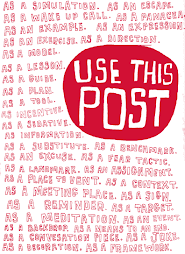open university
under rhizomatic learning:
For the educator, supporting rhizomatic learning requires the creation of a context within which the curriculum and knowledge are constructed by members of a learning community and which can be reshaped in a dynamic manner in response to environmental conditions.seems odd that for rhizomatic learning someone has to create a context within a curriculum..
that's the only part i'm not resonating with in the rhizome section - well - and the talk of the branches being topics.. that's just a web no?
p. 6:
Our aim is to produce a series of reports that explore new pedagogies for an interactive world. The reports are intended for teachers, policy makers, academics and anyone interested in how education may change over the next ten years.reports for teachers and policy makers and academics? over the next 10 yrs.
By pedagogy we mean the theory and practice of teaching, learning, and assessment.
probably - if we go that route - and keep to the curriculum.. no?
We acknowledge inspiration from the NMC Horizon Reports as well as other future-gazing reports on education.nmc horizon as future gazing? - in respect and love, it's more like reporting on current innovations - not future
In our report, the first in a series of annual briefings, we explore current and emerging innovations in education for the 21st century, in the hope that it will guide teacherswhat if curriculum design, course development and teaching strategies are the problem? - or at least - not our best focus..
and policy makers in making informed decisions about curriculum design, course development and teaching strategies
1. - we can already do those things with a kindle - as much as we need to - no?. a lot of sales here sounds like ways to present things.. do we need that?
2. - shirky - it's all already out there.. why keep reproducing.. and charging [1.3 trillion, ed 2nd largest market in the us] - why not add to wikipedia et al
or write your own books -
3. oh my.
Each of these principles can be assisted by
technology. For example, good performance could
be clarified by providing students with interactive
walk-throughs of successful solutions to problems.
Technology-enabled feedback can include
immediate automated responses to open
assignments and written student reports. The
computational technique of latent semantic analysis
processes a corpus of text (such as previous
student work over a range of marks, or a set of
model answers) to uncover similarities in meaning
between words and phrases, then uses this to
simulate human judgements of the coherence and
style of a new piece of student writing.
instagrok's idea is closest to feedback like a game gives - model responses? yikes.
this is where the focus of teaching, assessing and learning.. falls short on the first two.
imagine something like jerry's brain idea as a replacement for measuring and credentialing...
onto the intention economy - no
so much of this seems bent on proof. measurement. and a lot - proof and measurement of things other people have decided you should learn.
maybe i'm just in a cranky mood.
will come back later.




































